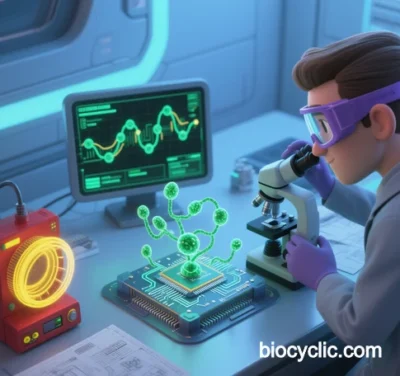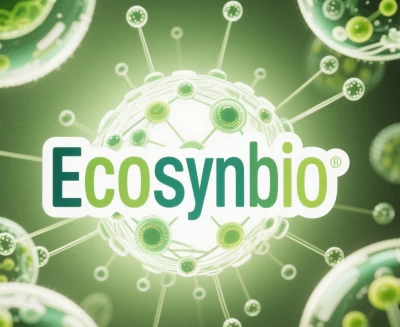
Bio-Cyclic Technological Breakthroughs and Innovations
Bio-Cyclic technology centers on the cyclical processes of matter, energy, and information within biological systems. By integrating interdisciplinary innovations in ecology, synthetic biology, materials science, and medicine, it drives sustainable development and resource regeneration. Below is a multidimensional analysis of recent breakthroughs:
1. Synthetic Biology-Driven Bio-Cyclic Systems
(1)Artificial Metabolic Pathways
- THETA Cycle: Developed by the Max Planck Institute, this novel CO₂ fixation pathway utilizes the two fastest-known CO₂-fixing enzymes—crotonyl-CoA carboxylase/reductase and phosphoenolpyruvate carboxylase—to directly convert CO₂ into acetyl-CoA. The cycle incorporates 17 biocatalysts and, after machine-learning optimization, achieves a 100-fold increase in acetyl-CoA yield, providing a modular tool for microbial carbon fixation and biomanufacturing .
- Microbial Metabolic Engineering:
- Novozymes engineers yeast and enzyme systems for cellulosic ethanol production, replacing fossil fuels at scale.
- Peking University’s BIOPIC team develops single-cell genomics techniques (e.g., MALBAC amplification) for precise microbial community analysis .
(2)Biodegradation Innovations
- PET Plastic Degradation:
- Industrial application of Ideonella sakaiensis achieves a degradation rate of 1.2 g/L/h.
- bitBiome employs single-cell sequencing to screen environmental microbes, building a 12-billion-gene database (bit-GEM) to accelerate discovery of novel enzymes (e.g., phage-derived hydrolases) .
2. Biodegradation and Resource Cycling Technologies
(1)Circular Economy Materials
- Bio-Based Construction Materials:
- bioMASON uses bacterial cementation to produce low-carbon cement, reducing construction industry emissions.
- StoneCycling upcycles construction waste into sustainable bricks, closing resource loops.
- Organic Waste Upcycling:
- Engineered E. coli converts agricultural waste into β-carotene with 95% yield efficiency.
- Microalgae bioreactors capture CO₂ to produce biodiesel at 10–15 g/m²/day .
(2)Agricultural and Aquaculture Optimization
- Bio-Cyclo Farming: Integrates backyard cultivation and organic waste management to enhance soil fertility and reduce greenhouse gases (e.g., wetland methanotrophs cut methane emissions by 30–50%).
- Recirculating Aquaculture Systems (RAS): Biofloc technology (BFT) enables high-density farming and nitrogen waste recycling, minimizing water exchange .
3. Medical and Diagnostic Bio-Cyclic Applications
(1)Targeted Therapies
- Bicycle Peptide Drugs:
- Bicycle Therapeutics designs 9–20 amino acid cyclic peptides combining antibody-like targeting and small-molecule penetration (1.5–2 kDa). Their Bicycle Toxin Conjugates (BTCs), such as BT5528 targeting EphA2 receptors, are in clinical trials for multiple cancers.
- Phage display platforms rapidly optimize high-affinity cyclic peptides for accelerated drug discovery .
(2)Biosensing Technologies
- Cyclic Signal Amplification (CSA): Uses nucleic acid hybridization or enzymatic reactions to amplify fluorescence signals, enabling ultrasensitive detection of biomarkers (e.g., cancer markers) at picomolar sensitivity .
4. Cross-Domain Synergies
(1)Bio-Technical Integration
- Enzymatic Recycling: Combines microbial degradation (e.g., plastic enzymolysis) with industrial closed-loop recycling for 100% material recovery.
- Climate-Economy Linkages: Evonik leverages biosurfactants (rhamnolipids) and gas-separation membranes (SEPURAN® Green) to purify biogas and capture CO₂, supporting carbon neutrality .
(2)Policy and Business Models
- Counter-Cyclical Policies: Tax adjustments stabilize GDP fluctuations, reducing recession risks (e.g., retail demand forecasting boosts revenue by 12–18%).
- Blockchain Traceability: Circularise tracks material lifecycles via blockchain, ensuring supply chain transparency .
Future Directions and Challenges
- Technical Bottlenecks:
- Scaling artificial metabolic pathways (e.g., THETA cycle industrial adaptability).
- Validating long-term safety and delivery efficiency of bicycle peptides.
- Ethics and Regulation: Balancing synthetic biology’s ecological risks with innovation.
- Scalability: Reducing costs of bio-based materials (e.g., bacterial cement) via subsidies and R&D .
Data sourced from public references. For collaborations or domain inquiries, contact: chuanchuan810@gmail.com.




